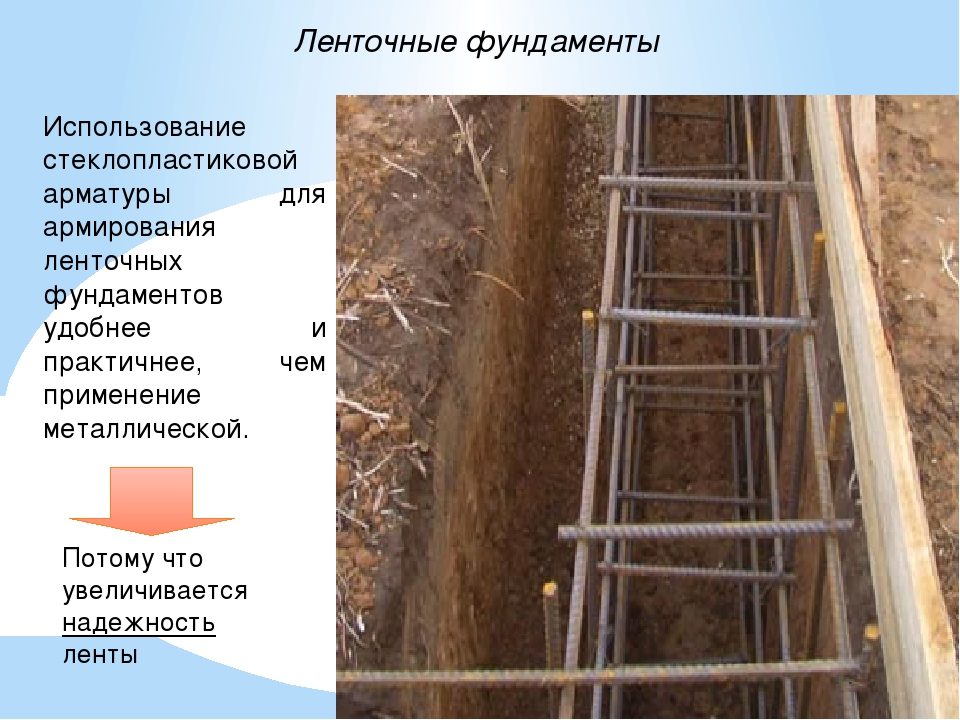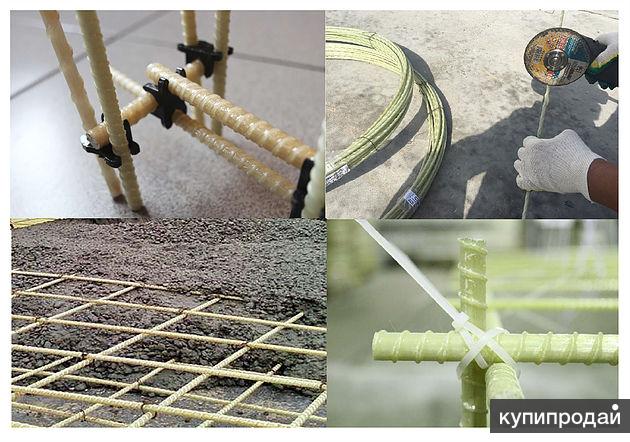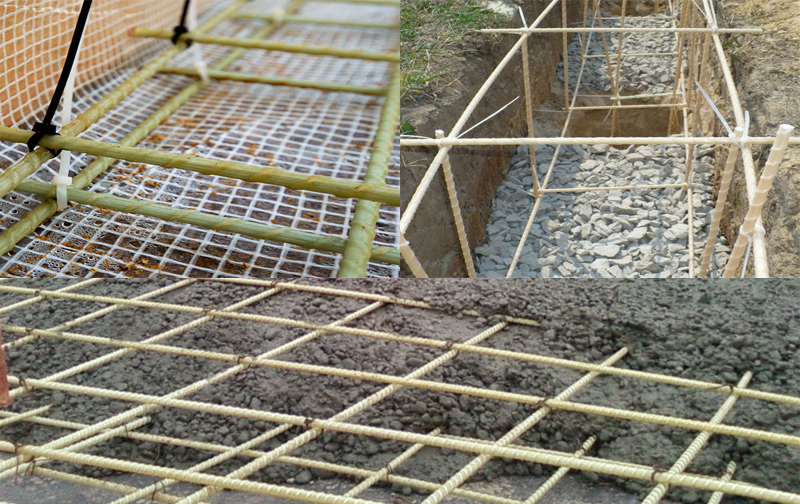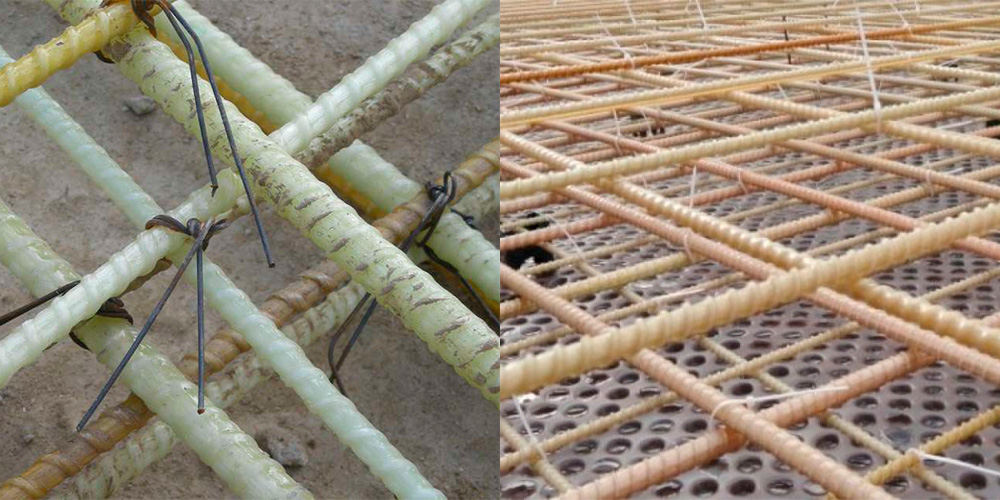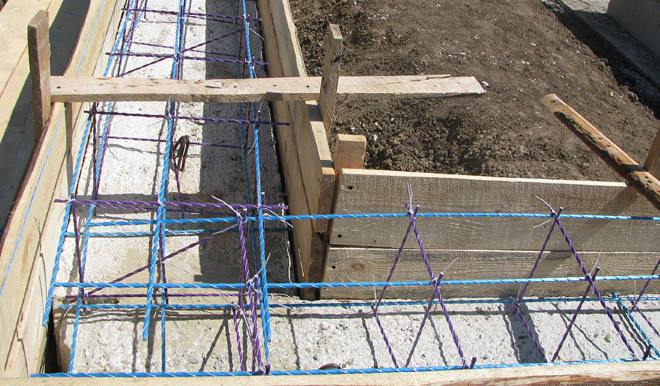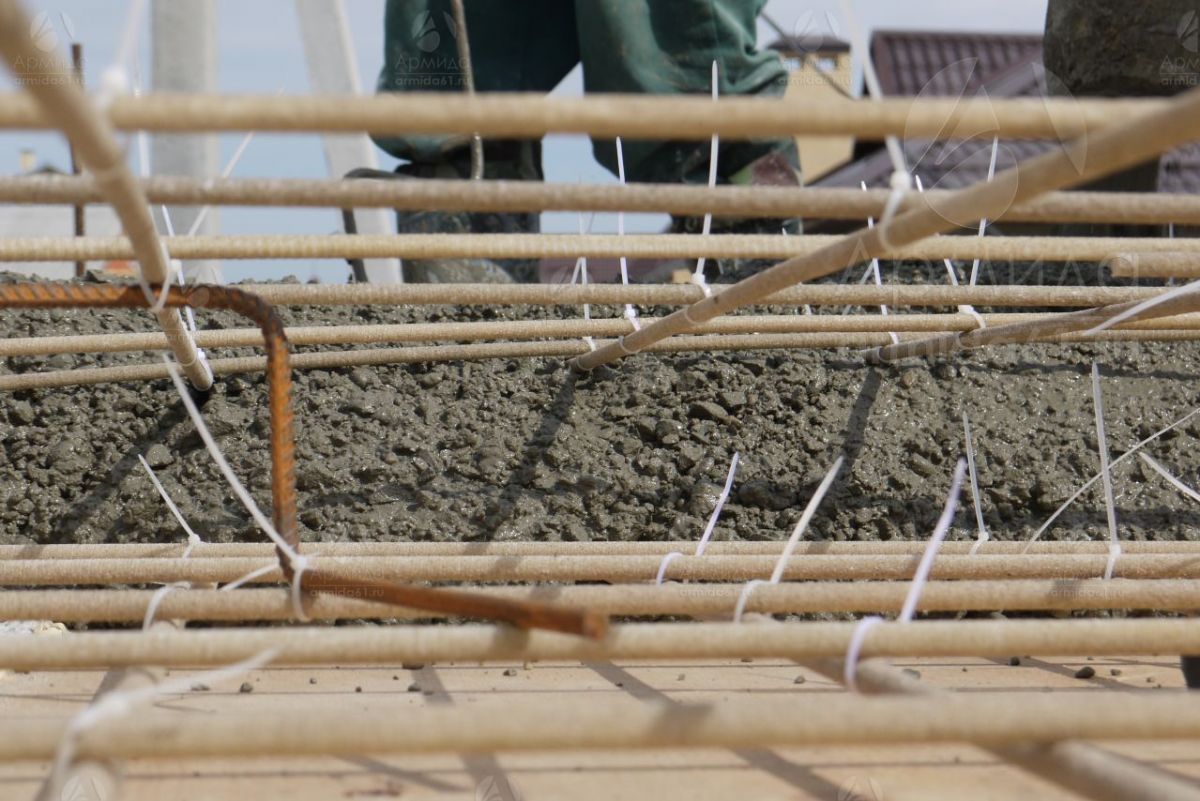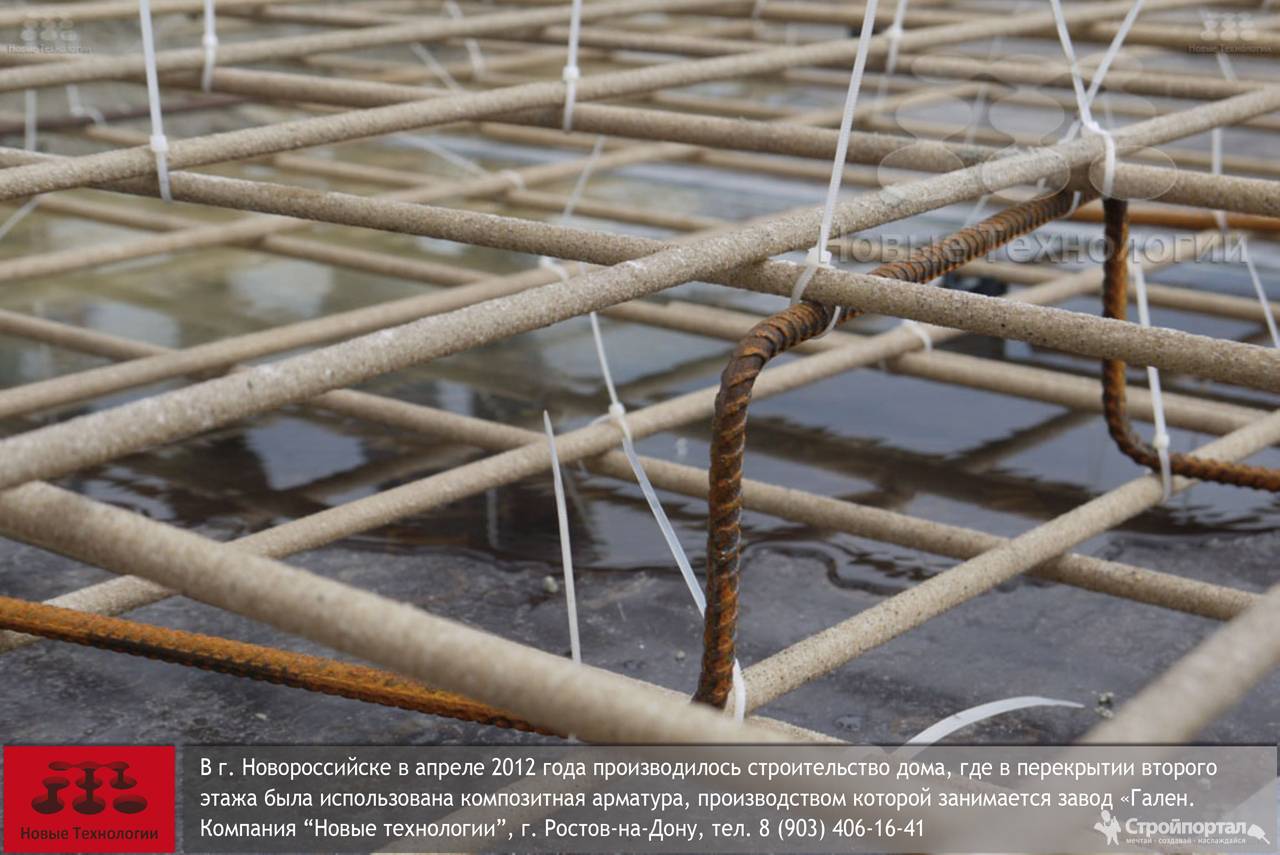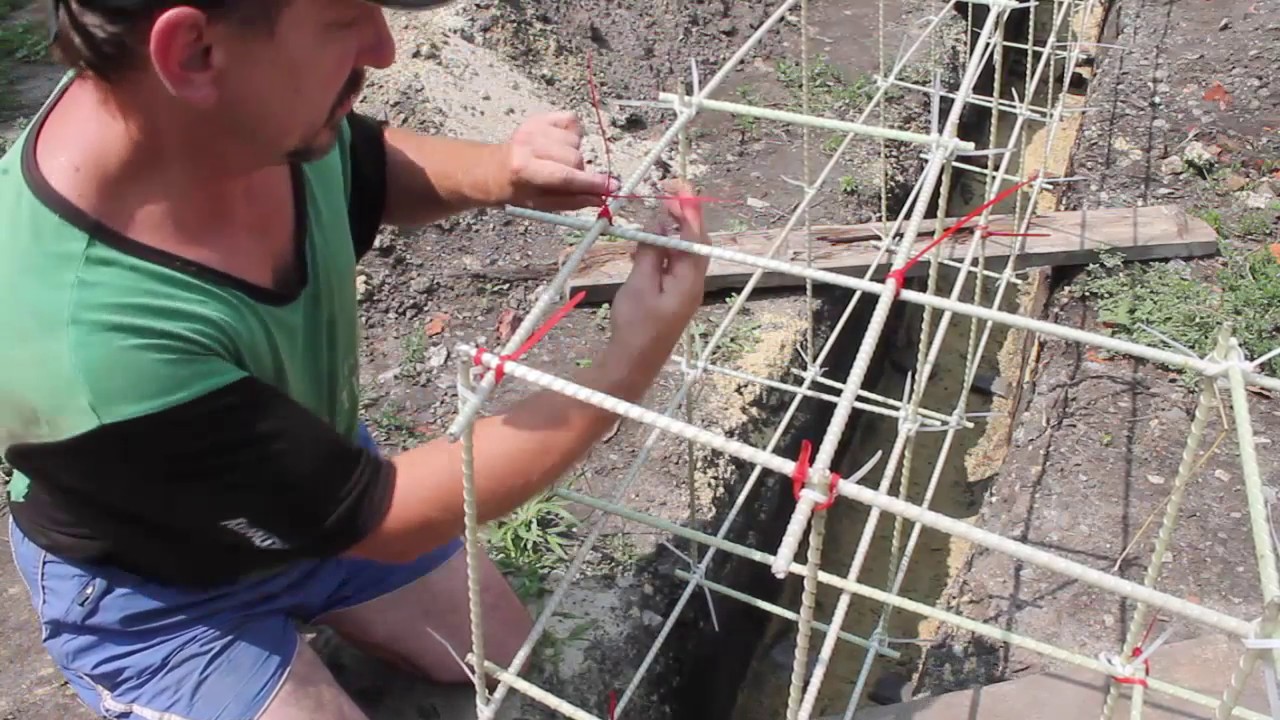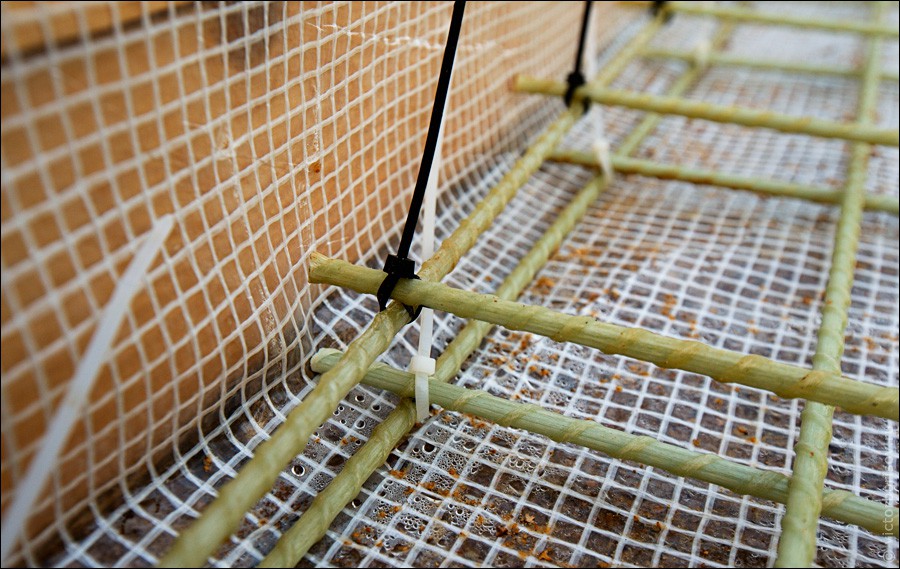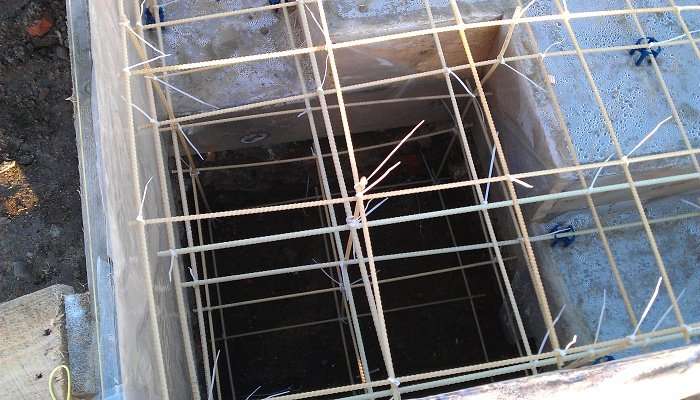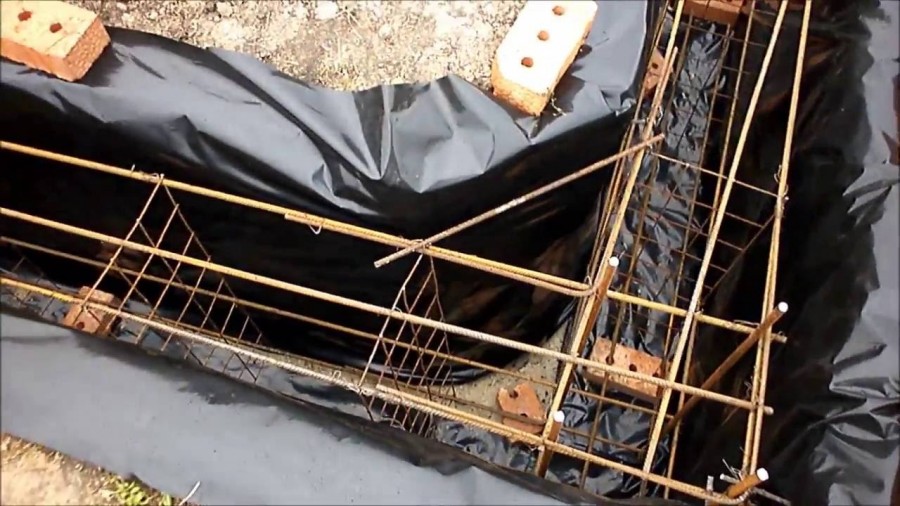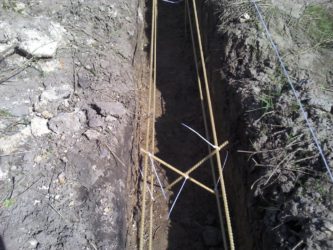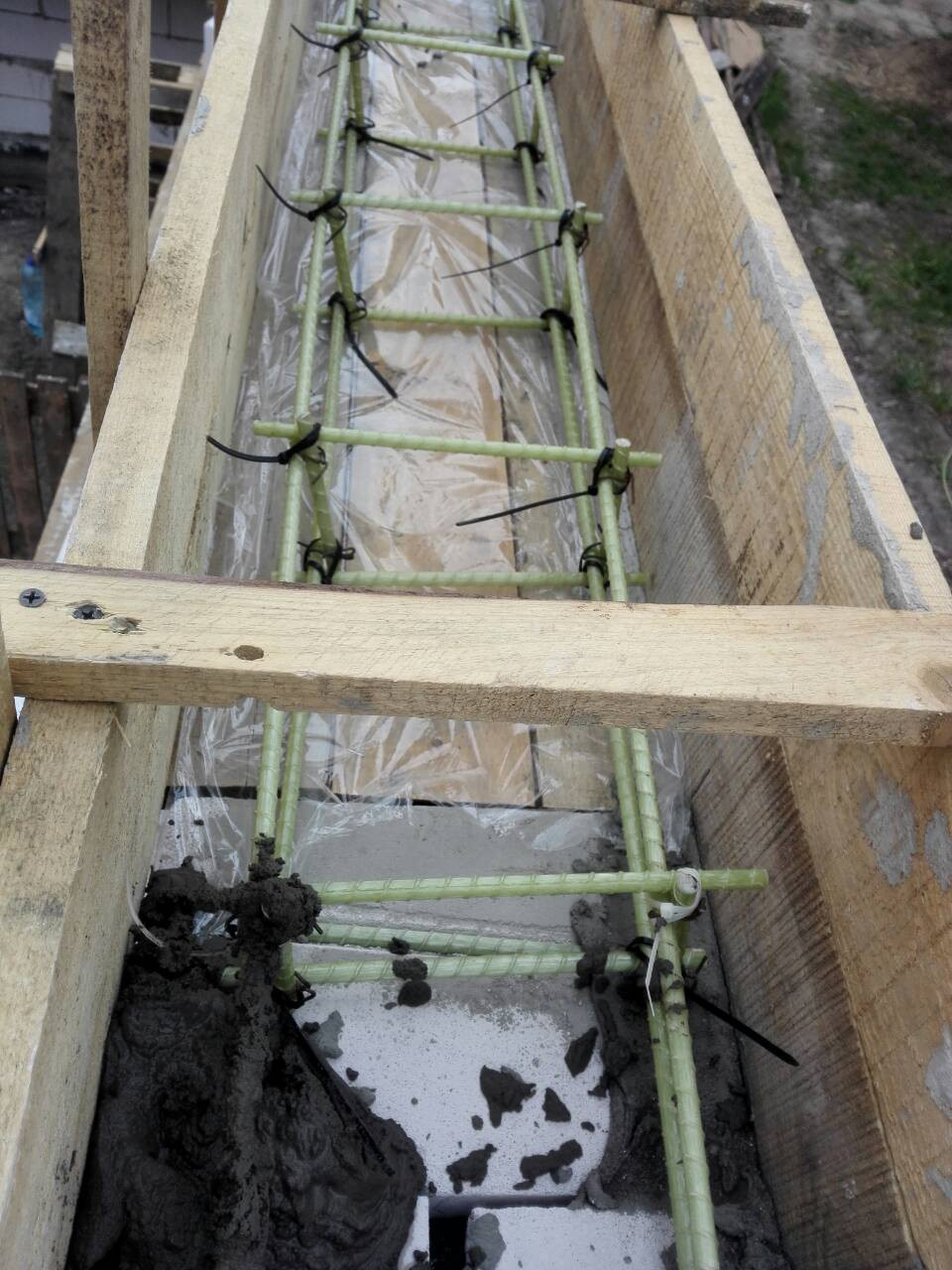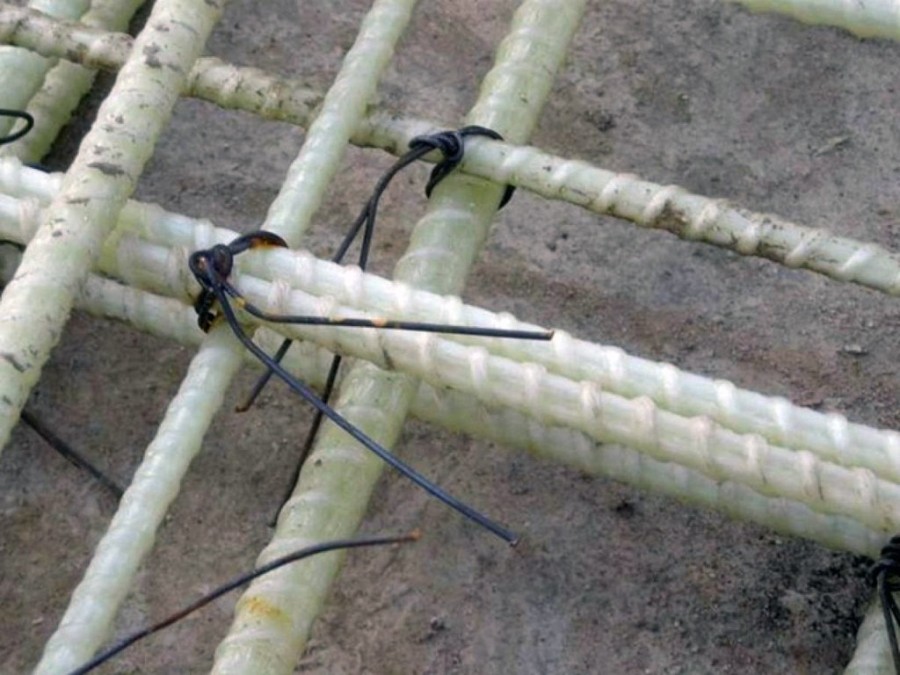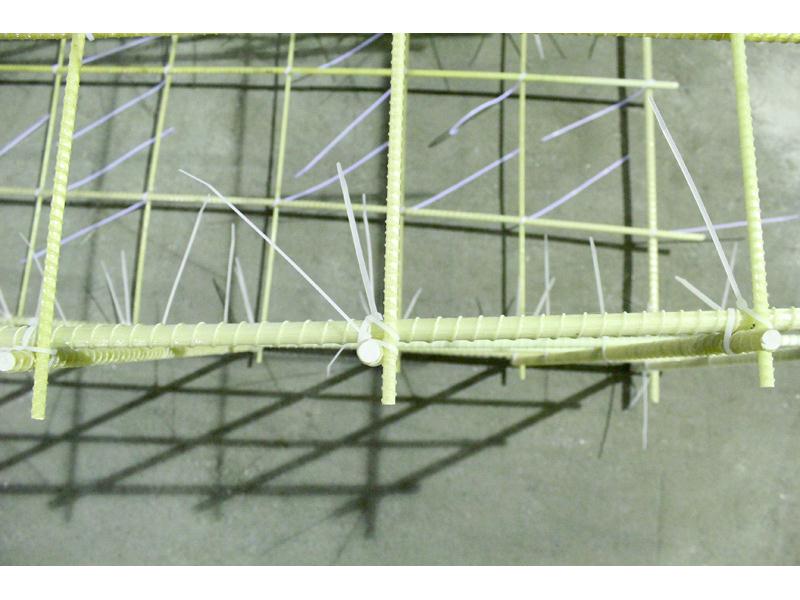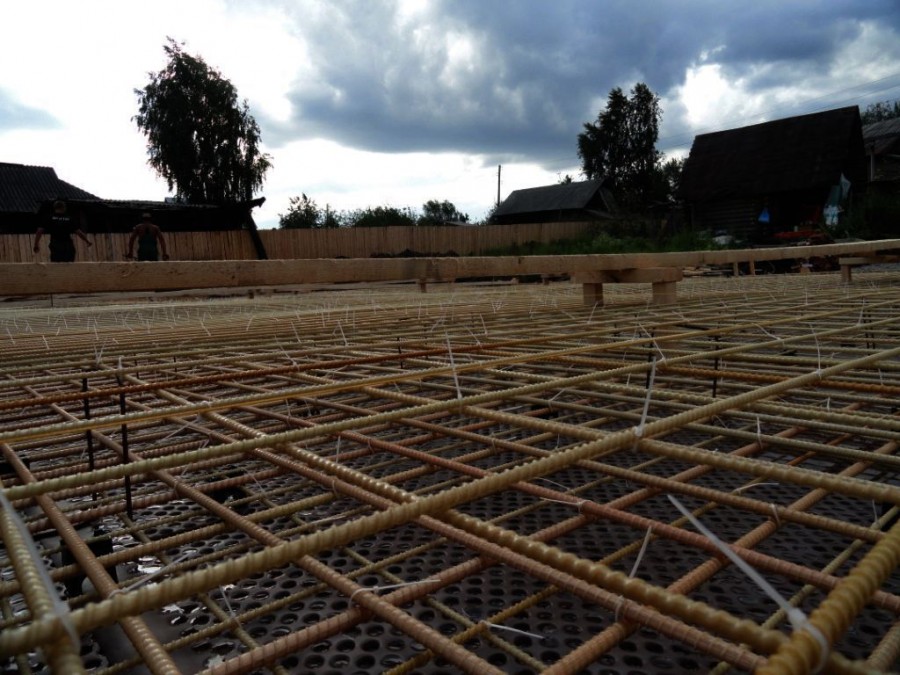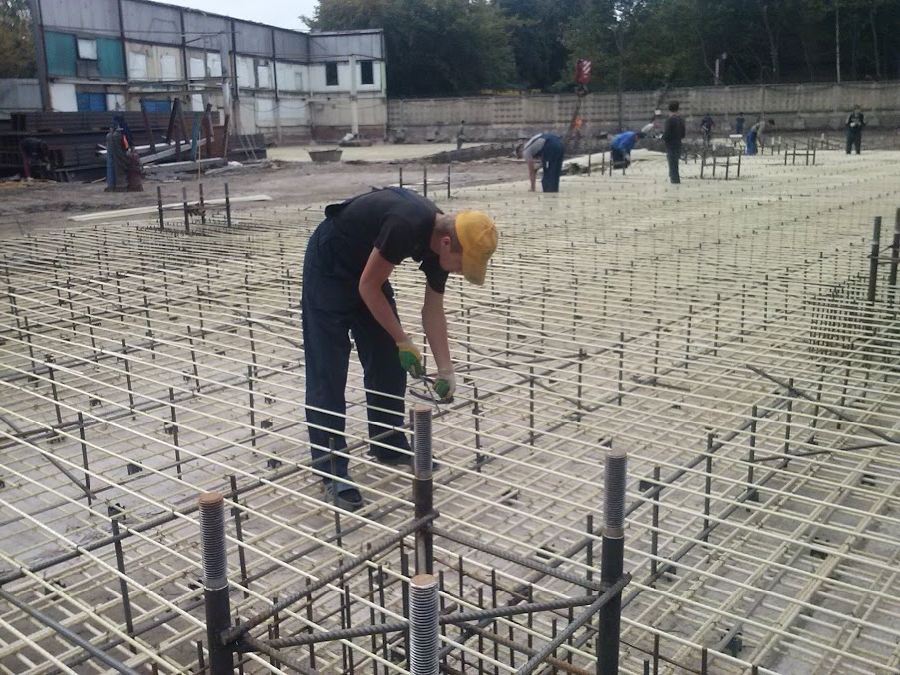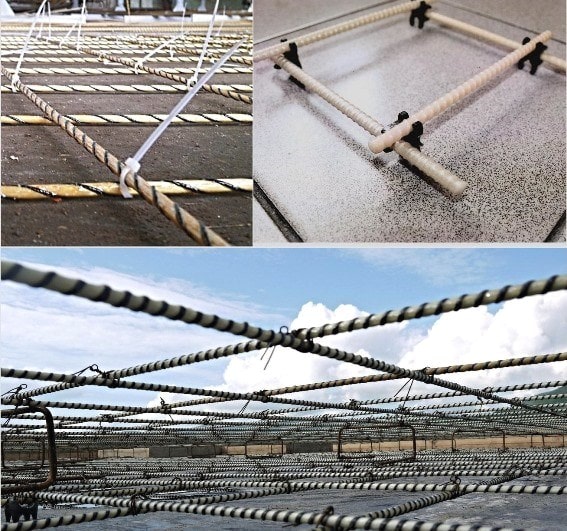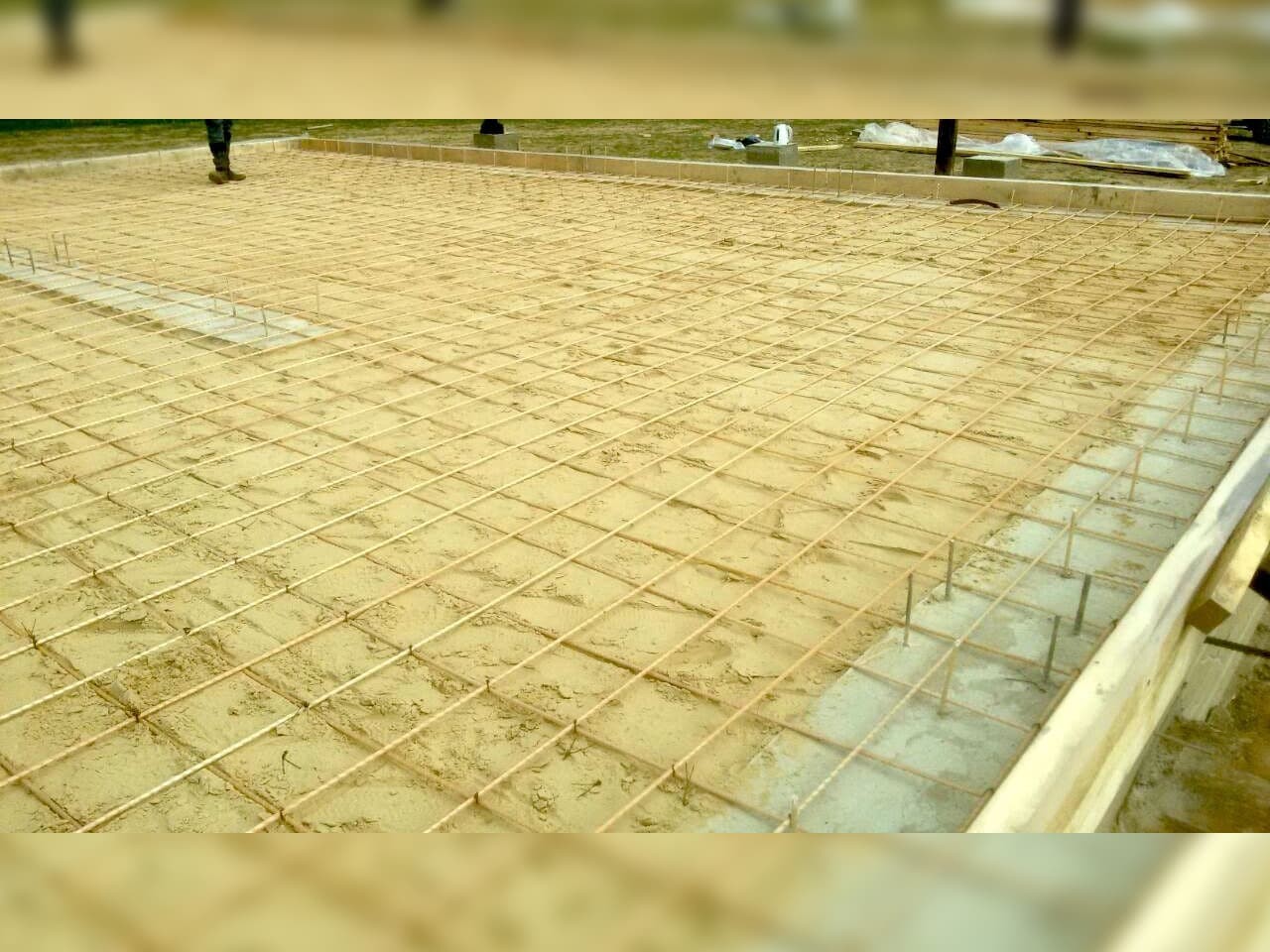Advantages and disadvantages of fiberglass reinforcement
Reinforcement cages, made not of traditional metal, but of fiberglass elements, have the following advantages.
- Unlike metal structures, they are lightweight structures that do not create a significant load on the foundation of the structure, which makes it possible to extend its service life.
- Fiberglass elements of reinforcing cages, unlike their metal counterparts, better withstand tensile loads, which makes it possible to use them when strengthening the most critical concrete structures. Fiberglass reinforcing cages are characterized by the optimal ratio of their light weight and high strength, which allows them to be attributed to a separate group of building materials that are gaining more and more popularity every year.
- Unlike metal reinforcement, which is susceptible to oxidative processes and over time reduces the strength of foundation structures, frames made of fiberglass elements do not lend themselves to the influence of such negative environmental factors.
- Parts of reinforcement systems made of fiberglass are dielectric and do not conduct electric current, which also affects their durability. Metal reinforcing structures used as grounding elements oxidize much faster under the influence of electric current, which cannot be said about bars made of composite materials. Naturally, fiberglass reinforcement cannot be used as a grounding element, but this only has a positive effect on its durability.
- The wear resistance of the fiberglass reinforcing structure, like that of steel, is also at a fairly high level.
- The coefficient of thermal expansion of the reinforcement cage made of fiberglass elements is very close to that of concrete structures, which significantly reduces the risk of cracking in them when using such a material.
The ratio of the diameters of the rods when constructing the reinforcing frame of the foundation
Judging by the reviews, the following disadvantages of fiberglass reinforcement can be distinguished.
- Compared to metal products, fiberglass reinforcement has a significantly higher modulus of elasticity, which is approximately 4 times higher than that of steel products. This fact means that fiberglass elements, in comparison with metal ones, will bend much better under the influence of mechanical loads. When using these elements to reinforce the roadway and foundation, this characteristic is not critical, but to strengthen floor slabs it is better to use metal structures or make additional calculations.
- Reinforcing elements made of fiberglass have the property of strongly softening and losing their elasticity when heated to a temperature of 600 degrees. Therefore, when using fiberglass parts, it is better to take care of reliable thermal insulation of the frame made of composite materials.
- Reinforcing bars made of fiberglass cannot be welded, unlike metal ones, so if there is a need for such an operation, it is better to use products, into the inside of which a steel tube is mounted at the stage of their production.
- It is better not to bend the reinforcement made of composite materials on the construction site, as this may damage it.Such an operation, guided by the drawings of the reinforcement cage, is best performed at the production site.
- The complexity and installation technology unusual for modern builders is another drawback of reinforcing elements made of fiberglass. Meanwhile, such a disadvantage cannot be considered too significant, given the reliability and durability of fiberglass structures.
Fastening fiberglass reinforcement using clamps and clamps
Rebar Tying Tools
Correct knitting of reinforcement for strip foundations implies that the nodes must be firmly fixed with wire. If this is not done, then when the concrete mix vibrates, the nodes can finally untie. This will then entail increased loads and premature failure.
At the strip foundation, the reinforcement is knitted:
- Hands - crochet;
- Inertial hook;
- With a pistol.
Bondage hook
When asked how to properly knit reinforcement onto a strip foundation, you can answer that you first need to choose a good tool.
Crochet hooks vary in shape. The choice of tool is purely individual. Purchase it based on your own tying technique. With an inappropriate tool, your hands will get tired very quickly, and you run the risk of rubbing calluses.
They are small in size, suitable for tying in both hard-to-reach places and in ordinary situations. When buying a hook, take a closer look and try it right away.

Homemade crochet hook
Homemade crochet hooks are made from a pattern, just like models made in production. In their production, reinforcement is used, which is sharpened from the side and bent in a vice. The handle is made of molten plastic, and then screwed on. A polymer tube can also be used for the handle.
The fittings are knitted by them schematically, reliably, with the obligatory observance of the distance between the nodes. Therefore, homemade crochet hooks are also great for crocheting.
Hook screwdriver
Using a screwdriver or other semi-automatic tool will speed up the work process, and may also help relieve your hands. By tying the strip foundation reinforcement with your own hands, you put more effort, and this, with a large amount of work, can significantly affect your productivity.
The hook is located on the leg. During operation, the hook catches the wire, pulls it upward, and the leg, turning, turns and twists the ends of the wire. The operation is performed until the required tightening of the knot is achieved.
Knitting gun
It is the best tool for the highest quality bonding. But it is quite expensive. It is used by professional builders who cannot afford to waste time. The device has a replaceable coil on which the wire is wound. These coils charge the device.
The big bonus of this tool is its so-called "autonomy". Working with it, you do not need to connect to the network, which makes it even more convenient. Also, in addition to the high cost, it has another significant drawback. The knitting gun is not used in confined spaces.
Tying with pliers
Another way to knit strip foundation reinforcement with your own hands. It is used when it is necessary to tie several wire knots, because with long work with pliers, hands will get very tired. For large volumes of work, it is much more preferable to use a different tool.
What are the fittings
Long gone are the days when fittings were only metal. Now in hardware stores, the assortment of material is much wider.
Plastic reinforcement for the foundation
The plastic type appeared on the domestic market relatively recently and has already managed to achieve a certain popularity due to its good technical characteristics.
Rods with a diameter of 6, 8, 10 mm are produced. The maximum temperature for their use is 60 °, so they are just perfect for the foundation. This also applies to strength characteristics. When stretched, fiberglass reinforcement can withstand a pressure of 1400 MPa or more, and when compressed, 350 MPa or more.
Plastic fittings are easier to install than metal fittings
Advantages of fiberglass reinforcement:
- corrosion resistance;
- low thermal conductivity, lack of prerequisites for the formation of cold bridges;
- does not conduct electricity, is impervious to electromagnetic waves;
- small weight;
- seamless (the rod is supplied in coils, so there is no need to cut into pieces);
- there is no need to use a welding machine during installation;
- ease of transportation and installation.
However, there is also a disadvantage, which is quite significant - low fracture strength. Fiberglass reinforcement resembles rubber in its strength properties - it stretches easily, which means that concrete will have to work in tension, but it does not know how to do this.
Fiberglass reinforcement is supplied in coils
There are some peculiarities of laying fiberglass reinforcement into the foundation. Firstly, this can only be done on a brick, and there must be an indent from the edges of the formwork. Secondly, the bundle of rods must be carried out with plastic clamps.
Steel reinforcement
Steel is more familiar to people with experience. As a result of using steel reinforcement, a reinforced concrete structure is obtained, the strength of which is much higher than concrete.
It has a ribbed surface, due to which good adhesion of the rods and concrete mortar is ensured.
Steel reinforcement in concrete works is most often used
The range of steel profiles is much higher (6 to 80 mm). They are supplied in the form of rods 6 or 12 meters long.
There are several types of steel reinforcement:
- non-spinning (the number of wires can be 3, 7 or 19, which is indicated in the reinforcement class, for example, P-7);
- steel ropes;
- welded reinforcing mesh;
- woven welded or wire mesh.
Composite
A fairly new type of fittings with many advantages:
- high specific strength;
- corrosion resistance;
- lack of heat and electrical conductivity;
- ecological cleanliness;
- convenient transportation and easy installation.
At the same time, the material does not have plasticity and rigidity. When cutting it, dust is formed, which can not only contaminate the workplace and tools, but also damage the respiratory tract, eyes, and skin. Therefore, it is possible to work with composite reinforcement only in protective clothing.
Composite rebar is more commonly used for wall reinforcement
Composite reinforcement is rarely used for foundations. More often it is a component of the walls of residential and industrial buildings, and is also used in the repair of reinforced concrete structures, especially in winter.
Reinforcement of the foundation
To determine if fiberglass reinforcement can be used for strip foundations and how to knit fiberglass rods with such a base, you need to take into account that there are two types of base with tape:
- Rectangular.
- T-shaped.
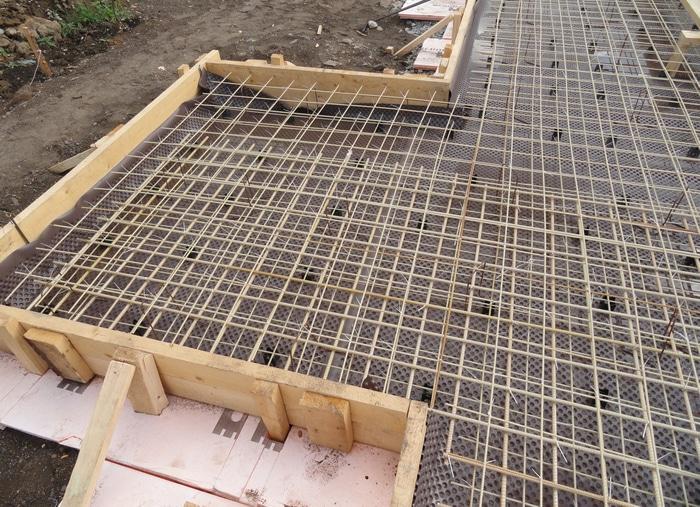
In the second type, the installation of reinforcement is carried out without preliminary calculations, and the sole is designed to absorb bending loads. The material can be sewn into the wall, but extra care must be taken when installing into the sole.
If the foundation has a rectangular cross-section, the use of fiberglass reinforcement is justified, since this structure can take compressive loads.
Tools and materials
Before you start knitting a strip foundation, you need to prepare the following tools and materials:
- Measuring device - tape measure.
- A device for fitting and processing rods - a grinder.
- Personal protective equipment.
- Water level.
- Plastic clamps for fastening rods.
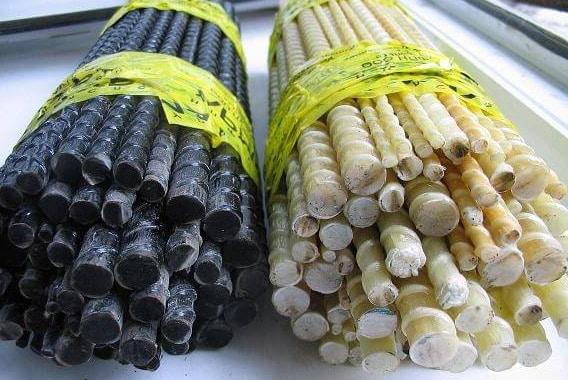
Excavation
Before starting the reinforcement, you need to prepare a recess, guided by the layout of the future building. The bottom surface must be leveled and tamped, then a layer of sand (10-15 cm) should be poured, poured with liquid and compacted. The next layer will be crushed stone with a similar thickness. After the top cover is compacted, a firm cushion with a flat surface is formed at the bottom.
Formwork construction
For arranging the formwork, boards are used, which are connected into shields using nails or self-tapping screws. The hats of the fasteners must be installed from the inside, and the structure must be additionally reinforced with spacers.
The surface of the walls is covered with parchment, which is fixed with a stapler. The task of this material is to keep the planks clean and to prevent the leakage of liquid from the concrete screed.

Further on the walls are placed marks that will determine the level of concrete pouring. It is worth guiding along this line when installing reinforced elements. For a more accurate performance of the work, a water level should be applied.
Knitting technology
To understand the knitting technology, you should take into account the simple advice of experienced specialists and adhere to the following algorithm of actions:
Before starting knitting, you need to prepare the drawings of the frame and cut all the elements, adhering to the calculations.
Clamps are used to position the cross wires in the lower layers. They are fixed both before starting the installation of the fittings and after completing the assembly.
The diameter of the cells is determined by the parameters of the tape, which is reinforced. In most cases, it varies from 15 to 30 cm.
Before connecting the longitudinal rods, they must be laid out on the ground and marked on them at the points of attachment of the transverse parts. In the process of knitting, a right angle must be observed.
The cross members are fixed with the longitudinal ones from the bottom. To ensure reliable reinforcement, plastic clamps or wire are knitted as tightly as possible.
First of all, it is necessary to prepare the horizontal layers of reinforcement, and then start fixing the vertical
Fixation is carried out from the inside of the cells to increase the reliability of the structure.
The corners need to be given special attention. Experts recommend not to bend them by temperature exposure, as this can worsen the strength properties.
After completing the binding of the reinforcement structure, it must be placed inside the formwork.
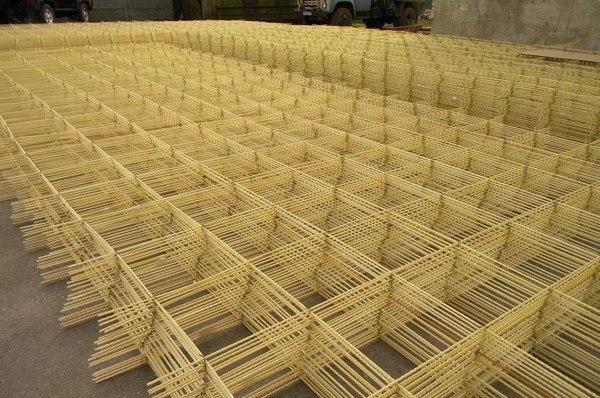
If fiberglass reinforcement is knitted with wire, then, in order to facilitate the work, it is better to use a crochet hook. An old screwdriver can play its role.
Reinforcement cage construction
When arranging the frame, you must adhere to the key requirement - the product must be completely filled with concrete, maintaining a distance between the walls of the formwork of at least 5 cm.To prevent the reinforced elements from being placed at the bottom of the recess, bricks should be fixed, and longitudinal rods and horizontal crossbars should be placed on top of them. These elements are connected using plastic clamps.
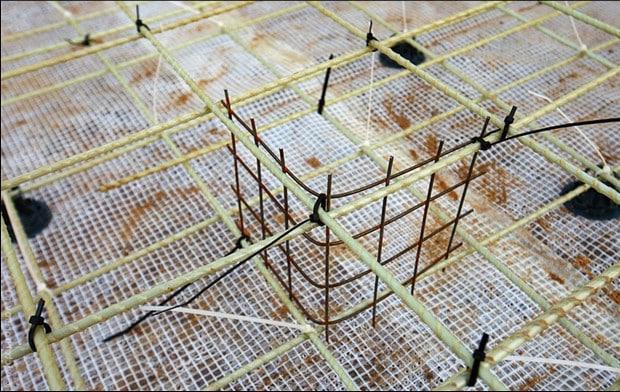
Pouring the foundation
At the last stage, you need to pour concrete into the formwork with a frame
It is important to carry out this action with extreme caution, placing it in the free cavities between the parts of the frame. It is also necessary to periodically pierce the concrete with rods to remove air bubbles.
Comparison of fiberglass and metal reinforcement
Considering the properties of composite reinforcement in comparison with steel, the following should be noted:
- Corrosion resistant.Fiberglass fittings are not afraid of either an alkaline or acidic environment.
- Thermal conductivity. Due to the fact that SPA is made of polymers, its thermal conductivity is an order of magnitude lower than that of metal. Does not create cold bridges. For the harsh climate in Russia, the problem of freezing of walls and foundations is very relevant.
- Dielectric tightness, electromagnetic transparency. Does not conduct electricity, does not interfere with radio waves.
- The weight. Fiberglass reinforcement is 8-10 times lighter than the corresponding metal reinforcement.
- Price. There is practically no gain in the price. On average, fiberglass is 30% more expensive, however, according to the assurances of manufacturers, the diameter of the metal fittings corresponds to a smaller diameter of the SPA. For example, a meter of 8 mm reinforcement costs 11 rubles on average, and a meter of fiberglass reinforcement costs 16 rubles. However, instead of 8 mm, you can use 6 mm, and the price of 6 mm averages 11 rubles. Therefore, when buying, the same resulting cost will come out as when using conventional fittings. Here is a table of correspondence between the diameters of steel and fiberglass reinforcement, mm:
| composite | 4 | 6 | 8 | 10 | 12 | 14 | 16 | 18 | 20 |
| steel | 6 | 8 | 12 | 14 | 16 | 18 | 20 | 22 | 25 |
- Tensile strength. For steel reinforcement, this parameter is 400 MPa, respectively, fiberglass reinforcement exceeds it in this indicator by 2-3 times, depending on the type.
- Seamlessness. There is no need to cut the reinforcement, since there are from 100 to 150 m in the bay. The metal reinforcement is cut to the size of the machine so that it can be brought to the construction site. As you know, when reinforcing, all joints are weak points. Therefore, it is better to perform reinforcement with a single structure. Thus, for example, you can install the foundation contour without fiberglass reinforcement connections.
- You can buy exactly as many meters as you need to complete the work. You do not need to buy steel bars, which are usually sold in a fixed length, for example, 12 m. You avoid overpaying for trimming if the entire material is not used.
- For the installation of fiberglass fittings, you do not need a welding machine and other additional tools.
- Convenience of transportation. As already mentioned, steel rebar is sold in rods, and fiberglass is sold both in rods and in 100-meter coils, which even fit into the trunk of a car and weigh about 10 kg. Those. transportation of materials will not require freight transport.
No cracks in reinforced concrete. This plus is achieved due to close values of the coefficients of thermal expansion.
We suggest that you familiarize yourself with Tying a bath mat from packages
Reinforcement of the foundation with fiberglass reinforcement
Strengthening the foundation with reinforcement gives a great advantage in terms of strength, so the process must be approached responsibly.
Tools and materials
Reinforcement of the foundation requires precision and accuracy, so the following should be prepared:
- A tape measure to take the appropriate measurements.
- Grinder for fitting and cutting fiberglass rods.
- Personal protective equipment for working with a grinder.
- Water level.
- Plastic clamps for connecting composite reinforcement rods.
Excavation
At this stage, it is necessary to dig a trench in accordance with the project of the future structure. The bottom of the trench is carefully leveled and tamped. Then sand is poured in a layer of 10-15 cm, spilled with water and compacted well. A layer of crushed stone of the same thickness is poured over the sand and carefully compacted again. As a result, a kind of cushion made of sand and rubble was formed at the bottom.
At this stage, it is important to make an absolutely flat plane for laying fiberglass reinforcement, so you should use the building level in the process
Formwork construction
The formwork is assembled from boards, connecting them into shields by means of self-tapping screws or nails
In this case, it is important to place the caps of the fasteners on the inside. It is imperative to strengthen the structure with special struts
The walls of the formwork are covered with glassine and fixed with a construction stapler. This material will keep the boards clean and prevent liquid from flowing out of the concrete solution.

We collect the formwork
Further, on the walls of the formwork, marks are made of the level to which the concrete solution will be poured. This line will be a kind of reference point when installing a reinforcing frame made of fiberglass reinforcement. It is best to use a water level for this step.
Reinforcement cage construction
The main condition at this stage is that the frame must be completely filled with concrete. Therefore, when installing the reinforcement mesh, the distance from the walls of the formwork should be at least 5 cm. To prevent the reinforcement from lying at the bottom of the trench, bricks are laid. Then longitudinal rods of fiberglass reinforcement and horizontal crossbars are laid on them in two rows. It is recommended to tie longitudinal and transverse rods with plastic clamps. After that, the vertical rods of the frame are tied in a similar way, the size of the cells should be 15 * 15 cm.
Pouring the foundation
The final stage is the pouring of a concrete mixture into a formwork with a frame made of fiberglass reinforcement rods.
The concrete solution is poured carefully, trying to fill all the space between the frame elements.
In addition, it is very important to periodically pierce the concrete with a metal bar in order to remove the formed air bubbles.


